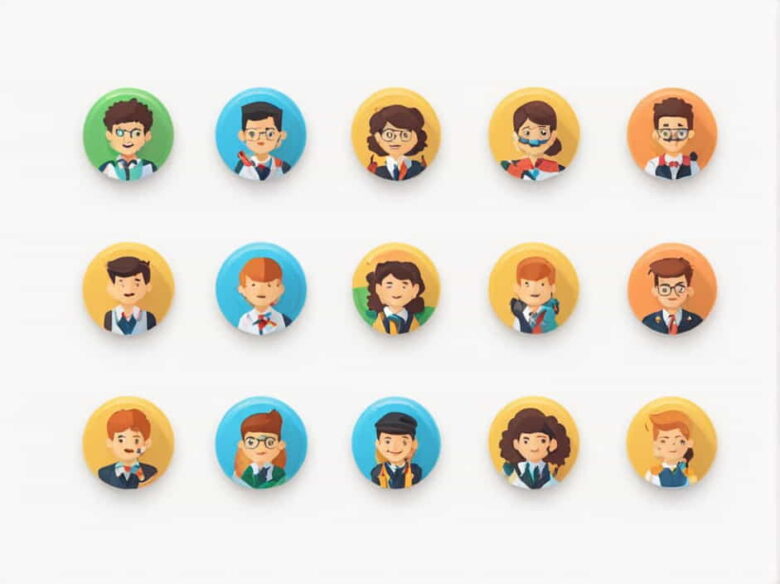A culturally and linguistically diverse (CLD) student refers to a learner who comes from a background that differs from the dominant culture and language of the educational system. These students may speak a language other than the primary language of instruction at home, have different cultural traditions, and experience unique challenges in adapting to the school environment.
Recognizing and understanding cultural and linguistic diversity in students is essential for promoting inclusive education, equitable learning opportunities, and academic success.
Characteristics of a Culturally and Linguistically Diverse Student
CLD students are defined by several key characteristics, including their linguistic background, cultural identity, and educational experiences.
1. Multilingual or Non-Native English Speakers
Many CLD students speak a language other than English as their primary or home language. They may:
- Be bilingual, speaking both their native language and English.
- Be English Language Learners (ELLs) who are still developing proficiency in English.
- Use a dialect or variation of English that differs from the academic language used in schools.
These linguistic differences can impact their reading, writing, speaking, and comprehension skills in an academic setting.
2. Diverse Cultural Backgrounds
CLD students come from various cultural traditions that shape their perspectives, behaviors, and learning styles. This diversity includes:
- Different customs, traditions, and values that influence classroom interactions.
- Unique communication styles, such as indirect or direct speech.
- Varied approaches to education, where students may be accustomed to different teaching methods or classroom structures.
Educators must acknowledge these cultural differences to create an inclusive and respectful learning environment.
3. Distinct Educational Experiences
A student’s previous schooling experience can affect their academic performance in a new educational system. Some CLD students:
- May have received formal education in their native country before transitioning to a new system.
- Might have limited schooling experiences due to migration, displacement, or socioeconomic barriers.
- May experience culture shock when adapting to new educational expectations and norms.
Recognizing these differences helps educators provide appropriate support and resources for their academic success.
Challenges Faced by Culturally and Linguistically Diverse Students
CLD students encounter unique challenges in the classroom that can affect their learning and engagement.
1. Language Barriers
One of the most significant obstacles for CLD students is language proficiency. They may struggle with:
- Understanding complex academic vocabulary.
- Expressing thoughts clearly in spoken and written English.
- Comprehending teacher instructions and classroom discussions.
Without proper language support, these difficulties can hinder their academic performance.
2. Cultural Adjustment
Adapting to a new culture and educational system can be overwhelming. CLD students may:
- Experience social isolation if they struggle to connect with peers.
- Face misunderstandings due to cultural differences in communication and behavior.
- Encounter stereotypes or biases that impact their confidence and self-identity.
Creating a welcoming and culturally responsive classroom can ease this transition.
3. Educational Gaps
CLD students may have varying levels of prior education, which affects their ability to keep up with the curriculum. Factors such as:
- Interrupted schooling due to migration or conflict.
- Differences in teaching styles from their home country.
- Lack of familiarity with standardized tests and grading systems.
Providing individualized learning plans and academic interventions can help bridge these gaps.
4. Socioeconomic Challenges
Many CLD students come from economically disadvantaged backgrounds, which can impact their education. Challenges may include:
- Limited access to educational resources like books, technology, or tutoring.
- Higher responsibilities at home, such as helping with family businesses or caregiving.
- Inconsistent access to stable housing and nutrition, which affects concentration and learning.
Schools must consider these factors when developing support systems for CLD students.
Supporting Culturally and Linguistically Diverse Students
To ensure CLD students thrive academically and socially, educators and institutions must adopt inclusive teaching strategies.
1. Implementing Culturally Responsive Teaching
Culturally responsive teaching acknowledges students backgrounds and integrates them into the learning process. Strategies include:
- Incorporating diverse perspectives in lesson plans and reading materials.
- Encouraging students to share their cultural experiences in discussions.
- Recognizing and respecting different learning styles.
This approach fosters a sense of belonging and engagement among CLD students.
2. Providing Language Support
Effective language support helps CLD students improve English proficiency while maintaining their native language. Schools can offer:
- English as a Second Language (ESL) programs for structured language learning.
- Bilingual education to support native language retention while learning English.
- Visual aids and simplified instructions to enhance comprehension.
By scaffolding language learning, students can develop skills at their own pace.
3. Encouraging Peer Support and Inclusion
A positive social environment helps CLD students feel accepted and connected. Strategies to encourage inclusion include:
- Pairing CLD students with peer mentors for academic and social support.
- Promoting group activities that celebrate cultural diversity.
- Addressing and preventing bullying or discrimination in the classroom.
Fostering a supportive school culture can boost students confidence and participation.
4. Engaging Families in Education
Parental involvement is crucial for CLD students success. Schools can:
- Offer multilingual communication to keep parents informed.
- Organize cultural events and family workshops.
- Provide resources on educational expectations and opportunities.
Strengthening school-family partnerships ensures students receive support both at home and in school.
5. Providing Equitable Assessment and Evaluation
Traditional assessment methods may not accurately reflect a CLD students abilities. Schools should:
- Use alternative assessments, such as project-based learning or oral presentations.
- Allow extra time for assignments and tests to account for language processing.
- Evaluate students based on progress and growth rather than strict standardized benchmarks.
Adopting fair evaluation practices helps accurately measure students’ true potential.
Benefits of Embracing Cultural and Linguistic Diversity in Schools
When schools support CLD students effectively, the benefits extend to the entire learning community.
1. Enriched Learning Environment
Diverse classrooms expose students to different languages, traditions, and viewpoints, fostering cultural awareness and global perspectives.
2. Development of Multilingual Skills
Encouraging bilingualism among CLD students helps them retain their native language, which enhances cognitive flexibility and career opportunities in the future.
3. Increased Empathy and Social Skills
Engaging with CLD students promotes mutual respect and understanding, reducing biases and fostering a more inclusive society.
4. Stronger Academic Performance
With the right support, CLD students can excel in academics, contributing diverse talents and perspectives to the school community.
A culturally and linguistically diverse (CLD) student brings valuable experiences, perspectives, and skills to the classroom. While they may face language barriers, cultural adjustments, and educational challenges, schools can support them through culturally responsive teaching, language assistance, peer inclusion, and equitable assessments.
By fostering an inclusive and welcoming environment, educators can help CLD students thrive and contribute to a richer, more diverse learning experience for all.



